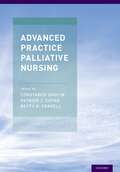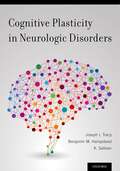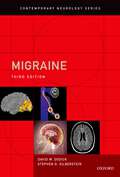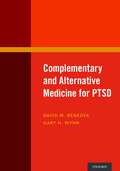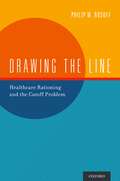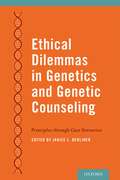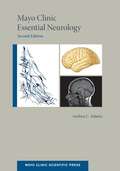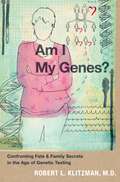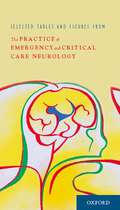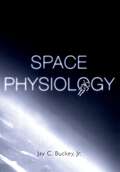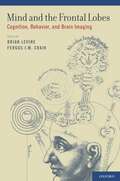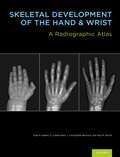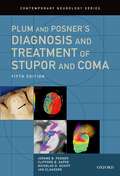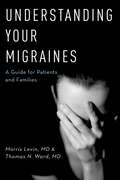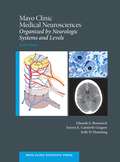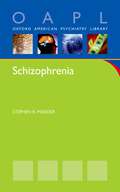- Table View
- List View
Advanced Practice Palliative Nursing
Advanced Practice Palliative Nursing is the first text devoted to advanced practice nursing care of the seriously ill and dying. This comprehensive work addresses all aspects of palliative care including physical, psychological, social, and spiritual needs. Chapters include: symptoms common in serious illness, pediatric palliative care, spiritual and existential issues, issues around the role and function of the advanced practice nurse (APN), reimbursement, and nursing leadership on palliative care teams. Each chapter contains case examples and a strong evidence base to support the highest quality of care. The text is written by leaders in the field and includes authors who have pioneered the role of the advanced practice nurse in palliative care. This volume offers advanced practice content and practical resources for clinical practice across all settings of care and encompassing all ages, from pediatrics to geriatrics.
Cognitive Plasticity in Neurologic Disorders
by Joseph I. Tracy, Benjamin M. Hampstead and K. SathianCognitive Plasticity in Neurologic Disorders describes and specifies the cognitive impact of neuroplastic processes in key neurologic disorders and syndromes. It is set apart from previous works in this area by its emphasis on the changing quality of neurocognition, demonstrating that this dynamic nature emerges from the neuroplastic processes at work in both mild and severe states of brain disease or injury. This resource describes the ways neurological illness or trauma (or attempts to treat patients with such conditions) can trigger neuroplastic mechanisms in the brain, inducing cognitive reorganization and remapping of brain networks. Each chapter shows how the cognitive and behavioral presentation of the disorder mirrors the changing neurobiologic context, and displays the numerous techniques being employed (e.g. behavior and rehabilitation therapies, electrical stimulation, and computer/machine neuromodulation of brain signals) underlying the neurobiology in ways that facilitate adaptive plasticity and cognitive recovery. An important feature of the book involves characterizing the degree to which the mechanistic principles governing neuroplastic responses and cognitive reorganization in the brain have been elucidated, making clear that it is these principles which will allow us to further develop rational rehabilitative therapies, match patients to appropriate treatments, and even begin to predict clinical treatment outcomes.
Migraine (Contemporary Neurology Series)
by David Dodick Stephen SilbersteinMigraine is a complex neurological disorder that is characterized by a complex neurobiology, clinical features that may overlap with over 300 causes of headache, and an association with major medical illnesses and comorbid diseases. This books draws upon the authors' vast clinical experience and exhaustive knowledge of the science of migraine and the practice of headache medicine and provides this knowledge in a comprehensive yet digestible format. While migraine is often a subject in other textbooks on headache, it is the sole focus of this volume. The authors provide an up-to-date overview of the evidence base and combine this with their experience and expertise to help practitioners make informed treatment decisions. This book also provides a glimpse into the future describing new treatment modalities, including neurostimulation technologies and biologics that are emerging as potentially valuable treatment options. The authors also deal extensively with the unique and complex management of migraine in women throughout the reproductive life cycle. For those looking for a practical, insightful, and in-depth review on the subject of migraine, there is no other option.
Complementary and Alternative Medicine for PTSD
The number of individuals diagnosed with posttraumatic stress disorder has increased in the past decade, not only in the military and veteran population but within the civilian population as well. Traditional treatments such as pharmacotherapy and psychotherapy have provided less-than-ideal results proving to be less effective when used alone to treat the disorder. Complementary and Alternative Medicine for PTSD supplements these traditional treatments, using new and effective techniques to fill the therapeutic void. The alternative therapies covered include acceptance and commitment therapy, acupuncture, alternative pharmacology, canine assistive therapy, family focused interventions, internet and computer-based therapy, meditation techniques, mobile applications, recreational therapy, resilience training, transracial magnetic stimulation, virtual reality exposure therapy, and yoga. Each chapter delivers the most up-to-date understanding of neurobiology, best practices, and key points for clinicians and patients considering inclusion of these treatments in patient care. Drs. David Benedek and Gary Wynn offer insight into the future of complementary and alternative medicine, shining a light onto how these techniques fit into clinical practice to create the most beneficial treatments for the patient. This book is both an essential resource and practical guide to everyday clinical interactions. It is a necessary addition to the medical library for students and senior clinicians alike.
Complementary and Alternative Medicine for PTSD
by David M. Benedek and Gary H. WynnThe number of individuals diagnosed with posttraumatic stress disorder has increased in the past decade, not only in the military and veteran population but within the civilian population as well. Traditional treatments such as pharmacotherapy and psychotherapy have provided less-than-ideal results proving to be less effective when used alone to treat the disorder. Complementary and Alternative Medicine for PTSD supplements these traditional treatments, using new and effective techniques to fill the therapeutic void. The alternative therapies covered include acceptance and commitment therapy, acupuncture, alternative pharmacology, canine assistive therapy, family focused interventions, internet and computer-based therapy, meditation techniques, mobile applications, recreational therapy, resilience training, transracial magnetic stimulation, virtual reality exposure therapy, and yoga. Each chapter delivers the most up-to-date understanding of neurobiology, best practices, and key points for clinicians and patients considering inclusion of these treatments in patient care. Drs. David Benedek and Gary Wynn offer insight into the future of complementary and alternative medicine, shining a light onto how these techniques fit into clinical practice to create the most beneficial treatments for the patient. This book is both an essential resource and practical guide to everyday clinical interactions. It is a necessary addition to the medical library for students and senior clinicians alike.
Mayo Clinic Guide to Cardiac Magnetic Resonance Imaging (Mayo Clinic Scientific Press)
by Kiaran McGee Matthew Martinez Eric WilliamsonThe Mayo Clinic Guide to Magnetic Resonance Imaging, Second Edition, is a thoroughly handy reference text and soon to be classic text is designed to educate physicists, technologists, and clinicians in the basics of cardiac MRI. A significantly expanded and reworked clinical imaging section provides numerous imaging protocols for the most commonly indicated cardiac MRI examinations as well as a plethora of well illustrated and described clinical examples. This text is a must have for anyone interested in developing their own cardiovascular MR imaging practice or advancing their existing skills. The addition of case-based questions and answers add a new dimension to this expanded second edition.
Mayo Clinic Guide to Cardiac Magnetic Resonance Imaging (Mayo Clinic Scientific Press)
by Kiaran McGee Matthew Martinez Eric WilliamsonThe Mayo Clinic Guide to Magnetic Resonance Imaging, Second Edition, is a thoroughly handy reference text and soon to be classic text is designed to educate physicists, technologists, and clinicians in the basics of cardiac MRI. A significantly expanded and reworked clinical imaging section provides numerous imaging protocols for the most commonly indicated cardiac MRI examinations as well as a plethora of well illustrated and described clinical examples. This text is a must have for anyone interested in developing their own cardiovascular MR imaging practice or advancing their existing skills. The addition of case-based questions and answers add a new dimension to this expanded second edition.
Drawing the Line: Healthcare Rationing and the Cutoff Problem
by Philip M. RosoffUnlike the rest of the advanced industrialized world, the United States does not have a national healthcare system that guarantees that all residents have access to medical services. Over the past century a number of unsuccessful attempts have been made to create and implement a unified, coordinated healthcare system. Piecemeal progress has been made, such as with the passage of Medicare, Medicaid, and the Affordable Care Act. However, the US still has the dubious distinction of possessing the most expensive healthcare in the world as well as health-related outcomes that are shameful for a wealthy country, mostly due to the number of people who lack decent care. The continuing escalation in medical costs is also threatening the financial stability of the nation. In his first book, Rationing is Not a Four-Letter Word, Philip M. Rosoff argued that the only way to control costs is to impose rationing, and the only way to do so fairly is to have it apply to all. The key to rationing is how it is accomplished. He outlined a general approach to making rationing decisions that involved a comprehensive explication of procedural fairness and illustrated this with the real-life accepted system of solid organ allocation for transplantation. In this book, he discusses how to decide what should and should not be covered in a generous benefits plan for all. He considers a variety of ways this might be done and concludes that the most just approach is to utilize a transparent process in which experts and lay people develop a consensus on what should be covered by focusing on both clinical evidence of need and the effective and appropriate means to address those needs. He also considers the various objections and impediments to this proposal and concludes that they are obstacles that can be successfully met.
Ethical Dilemmas in Genetics and Genetic Counseling: Principles through Case Scenarios
by Janice BerlinerKnowledge of the genetic basis of human diseases is growing rapidly, with important implications for pre-conceptional, prenatal, and predictive testing. While new genetic testing offers better insight into the causes of and susceptibility for heritable diseases, not all inherited diseases that can be predicted on the basis of genetic information can be treated or cured. Should we test everyone who wants to know his or her genetic status, even when there are no possibilities for treatment? What is the role of the "right-not-to-know?" Do we test children for adult onset disorders because the parents just "have to know" or do we respect the children's right to choose when they are older? Do we allow commercial companies to offer genetic tests directly to consumers without the proper oversight regarding what the test results will mean? By using a creative approach that focuses on a single extended family as a case example to illustrate each chapter's key point, the authors elucidate ethical issues arising in the genetics clinic and laboratory surrounding many timely issues, including: · prenatal and pre-implantation genetic diagnosis · assisted reproductive technologies · incidental findings in genetic testing · gene patenting · testing children for adult onset disorders · direct to consumer testing Ethical Dilemmas in Genetic Counseling: Principles through Case Scenarios is essential reading for anyone interested in the ethical issues surfacing in common genetics practice. Written exclusively by genetic counselors, it makes a significant contribution to the field of ethics in genetics and thus will appeal not only to genetic counselors but to physicians, nurses, and all those concerned with bioethics and social science.
Ethical Dilemmas in Genetics and Genetic Counseling: Principles through Case Scenarios
by Janice L. BerlinerKnowledge of the genetic basis of human diseases is growing rapidly, with important implications for pre-conceptional, prenatal, and predictive testing. While new genetic testing offers better insight into the causes of and susceptibility for heritable diseases, not all inherited diseases that can be predicted on the basis of genetic information can be treated or cured. Should we test everyone who wants to know his or her genetic status, even when there are no possibilities for treatment? What is the role of the "right-not-to-know?" Do we test children for adult onset disorders because the parents just "have to know" or do we respect the children's right to choose when they are older? Do we allow commercial companies to offer genetic tests directly to consumers without the proper oversight regarding what the test results will mean? By using a creative approach that focuses on a single extended family as a case example to illustrate each chapter's key point, the authors elucidate ethical issues arising in the genetics clinic and laboratory surrounding many timely issues, including: · prenatal and pre-implantation genetic diagnosis · assisted reproductive technologies · incidental findings in genetic testing · gene patenting · testing children for adult onset disorders · direct to consumer testing Ethical Dilemmas in Genetic Counseling: Principles through Case Scenarios is essential reading for anyone interested in the ethical issues surfacing in common genetics practice. Written exclusively by genetic counselors, it makes a significant contribution to the field of ethics in genetics and thus will appeal not only to genetic counselors but to physicians, nurses, and all those concerned with bioethics and social science.
Mayo Clinic Essential Neurology (Mayo Clinic Scientific Press)
Mayo Clinic Essential Neurology, Second Edition has been updated and designed with the busy medical student, resident, and clinician in mind. This rapidly changing specialty has more therapeutic options available to treat neurologic disease than ever before. The text, tables, and illustrations are enhanced with online videos, all designed to provide quick and concise information on common neurologic disorders. The book addresses three main areas in fourteen user-friendly chapters: the neurologic examination and diagnostic testing, common neurologic symptoms, and common neurologic diseases. Each chapter is highly illustrated with figures and tables, and is accompanied with audio samples portraying dysarthias and videos showing gait, movement disorder, fasciculation, and other neurologic phenomena.
Am I My Genes?: Confronting Fate and Family Secrets in the Age of Genetic Testing
by Robert L. KlitzmanIn the fifty years since DNA was discovered, we have seen extraordinary advances. For example, genetic testing has rapidly improved the diagnosis and treatment of diseases such as Huntington's, cystic fibrosis, breast cancer, and Alzheimer's. But with this new knowledge comes difficult decisions for countless people, who wrestle with fear about whether to get tested, and if so, what to do with the results. Am I My Genes? shows how real individuals have confronted these issues in their daily lives. Robert L. Klitzman interviewed 64 people who faced Huntington's Disease, breast and ovarian cancer, or Alpha-1 antitrypsin deficiency. The book describes--often in the person's own words--how each has wrestled with the vast implications that genetics has for their lives and their families. Klitzman shows how these men and women struggle to make sense of their predicament and its causes. They confront a series of quandaries--whether to be tested; whether to disclose their genetic risks to parents, siblings, spouses, offspring, friends, doctors, insurers, employers, and schools; how to view and understand themselves and their genetics; what treatments, if any, to pursue; whether to have children, adopt, screen embryos, or abort; and whether to participate in genetic communities. In the face of these uncertainties, they have tried to understand these tests and probabilities, avoid fatalism, anxiety, despair, and discrimination, and find hope, meaning, and a sense of wholeness. Forced to wander through a wilderness of shifting sands, they chart paths that many others may eventually follow. Klitzman captures here the voices of pioneers, some of the first to encounter the personal dilemmas introduced by modern genetics. Am I My Genes? is an invaluable account of their experience, one that will become all the more common in the coming years. "An extraordinary exploration...probing the many roles and implications of genetics in our lives today.... Filled with astonishing insights, this riveting book is vital reading for us all." --Paula Zahn "Klitzman lucidly discusses the moral and psychological complexities that come in the wake of genetic testing.... An important book for anyone who has the genes for pathology, which is all of us, and I recommend it highly." --Kay Redfield Jamison, author of An Unquiet Mind "An illuminating voyage through the medical, familial and existential quandaries faced by those of us at genetic risk." --Thomas H. Murray, President and CEO, The Hastings Center
The Practice of Emergency and Critical Care Neurology
by Eelco F. Wijdicks, MD, PhD, FACPThe Practice of Emergency and Critical Care Neurology serves as the definitive authoritative reference on the care of the patient with a critical neurologic disorder at risk of deterioration and in need of immediate attention. This work is an expanded new edition of the book on the management of patients with critical neurologic disorders. This single-authored monograph is broad in scope and follows the patients from the very moment they enter the emergency department to their care in the neurosciences intensive care unit. This book condenses the essential information into several sections. These are: The General Principles of Recognition of Critically Ill Neurologic Patients in the Emergency Department, The Evaluation of Presenting Symptoms Indicating Urgency and Critical Emergency, General Principles of Management of Critically Ill Patients, Monitoring Devices and Diagnostic Tests, Complete Management of Specific Disorders in the Neurosciences Intensive Care Unit, Postoperative Neurosurgical and Neurointerventional Complications, Management of Medical Complications and End of Life Care. This accessibly written book differs from the conventional by specifically following the time course of clinical complexities as they emerge and change. It offers advice on how to diagnose and manage acute neuromuscular respiratory failure, acute worrisome headache, acute febrile confusion, acute diplopia, acute movement disorders, acute paraplegia, seizures and coma of uncertain cause in the emergency department. The major disorders requiring neurocritical care are covered in great detail and include traumatic brain injury aneurysmal subarachnoid hemorrhage, cerebral hemorrhage, hemispheric ischemic stroke, basilar artery occlusion, acute bacterial meningitis and encephalitis, myasthenic crisis and severe Guillan Barre syndrome. This book comes with a pocket book of selected tables and figures. This booklet covers all essential points for quick reference and has been considered a 'survival guide' for the house staff.
The Biology of Homosexuality (Oxford Series in Behavioral Neuroendocrinology)
by Jacques BalthazartIn this fascinating book, Jacques Balthazart presents a simple description of the biological mechanisms that are involved in the determination of sexual orientation in animals and also presumably in humans. Using scientific studies published over the last few decades, he argues that sexual orientation, both homosexual and heterosexual, is under the control of embryonic endocrine and genetic phenomena in which there is little room for individual choice. The author begins with animal studies of the hormonal and neural mechanisms that control the so-called instinctive behaviors and analyzes how this animal work may potentially apply to humans. The book does not focus exclusively on homosexuality, however. Instead, the book acts as a broader guide to the biological basis of sexual orientation, and also discusses important gender differences that may influence sexual orientation. While firmly grounded in the scientific literature, this text is developed for a broader audience and will be of interest to psychologists, researchers, students, and anyone interested in the biological factors that determine our sexuality.
Space Physiology
by Jay C. BuckeyThe success of any space flight mission depends not only on advanced technology but also on the health and well-being of crew members. This book, written by an astronaut physician, is the first practical guide to maintaining crew members health in space. It combines research results with practical advice on such problems as bone loss, kidney stones, muscle wasting, motion sickness, loss of balance, orthostatic intolerance, weight loss, and excessive radiation exposure. Additional topics include pre-flight preparation, relevant gender differences, long-duration medical planning, post-flight rehabilitation, and the physiology of extra-vehicular activity. Designed as a handbook for space crews, this text is also an invaluable tool for all the engineers, medical personnel, and scientists who plan and execute space missions.
Mind and the Frontal Lobes: Cognition, Behavior, and Brain Imaging
by Brian Levine Fergus I.M. CraikIn the past 25 years, the frontal lobes have dominated human neuroscience research. Functional neuroimaging studies have revealed their importance to brain networks involved in nearly every aspect of mental and cognitive functioning. Studies of patients with focal brain lesions have expanded on early case study evidence of behavioral, emotional, and cognitive changes associated with frontal lobe brain damage. The role of frontal lobe function and dysfunction in human development (in both children and older adults), psychiatric disorders, the dementias, and other brain diseases has also received rapidly increasing attention. In this useful text, 14 leading frontal lobe researchers review and synthesize the current state of knowledge on frontal lobe function, including structural and functional brain imaging, brain network analysis, aging and dementia, traumatic brain injury, rehabilitation, attention, memory, and consciousness. The book therefore provides a state-of-the-art account of research in this exciting area, and also highlights a number of new findings by some of the world's top researchers.
Skeletal Development of the Hand and Wrist: A Radiographic Atlas and Digital Bone Age Companion
by Cree M. Gaskin MD MBA S. Lowell Kahn J. Christoper Bertozzi Paul M. BunchBone age assessment, a crucial part of the diagnosis and management of pediatric growth disorders as well as the timing of certain pediatric orthopedic procedures, has for decades depended on the meticulous examination of plain radiographs. Examining the subtle changes present within the maturing human hand often proves to be challenging and time-consuming. Building on the popular Greulich and Pyle atlas, this book modernizes the method for pediatric skeletal maturity determination. It offers a wealth of images, carefully mined from thousands of digital radiographs from University of Virginia's Picture Archiving and Communication System (PACS), edited to best demonstrate important developmental bone features, and organized by age and sex for rapid reference. To expedite learning and clinical image analysis, images come in pairs: annotated and unannotated, for easy comparison. Succinct annotations on the images replace lengthy text to provide a quicker and clearer understanding of the skeletal age. These annotations highlight important and subtle features to help distinguish images that otherwise look superficially alike. The result is an atlas of exceptionally high quality skeletal radiographic standards that capture both the major and finer details of the accepted standards of Greulich and Pyle. The user-friendly format of this book enables a faster, more accurate, and more educational approach to determining skeletal maturity. The Digital Bone Age Companion packaged with the book is a computer program that facilitates viewing of the atlas images in digital format. Users can easily zoom in on radiographic features, set image level and width to their preference, and compare two or three reference standards side-by-side for difficult cases. Most importantly, the program expedites evaluation, optimizes workflow, and minimizes user-introduced errors with the reliable bone age calculator and built-in report generator. The digital format may also be available for integration with your Radiology Information System (RIS) for further workflow enhancement. Given the broad application of pediatric bone aging, Skeletal Development of the Hand and Wrist is not only intended for practicing and training radiologists, but for all of those who employ bone age studies as part of their practice.
Plum and Posner's Diagnosis and Treatment of Stupor and Coma (Contemporary Neurology Series)
by Jerome B. Posner Clifford B. Saper Nicholas D. Schiff Jan ClaassenPlum and Posner's Diagnosis and Treatment of Stupor and Coma, 5th edition, is a major update of the classic work on diagnosing the cause of coma, with the addition of completely new sections on treatment of comatose patients, by Dr. Jan Claassen, the Director of the Neuro-ICU at Columbia New York Presbyterian Hospital. The first chapter of the book provides an up-to-date review on the brain mechanisms that maintain a conscious state in humans, and how lesions that damage these mechanisms cause loss of consciousness or coma. The second chapter reviews the neurological examination of the comatose patient, which provides the basis for determining whether the patient is suffering from a structural brain injury causing the coma, or from a metabolic disorder of consciousness. The third and fourth chapters review the pathophysiology of structural lesions causing coma, and the specific disease states that result in coma. Chapter five is a comprehensive treatment of the many causes of metabolic coma. Chapter 6 review psychiatric causes of unresponsiveness and how to identify and treat them. Chapters 7 and 8 review the overall emergency treatment of comatose patients, followed by the treatment of specific causes of coma. Chapter 9 examines the long term outcomes of coma, including the minimally conscious state and the persistent vegetative state, and how they can be distinguished, and their implications for eventual useful recovery. Chapter 10 reviews the topic of brain death and the standards for examination of a patient that are required to make the determination of brain death. The final chapter 11 is by J.J. Fins, a medical ethicist who was invited by the other authors to write an essay on the ethics of diagnosis and treatment of patients who, by definition, have no way to approve of or communicate about their wishes. While providing detailed background for neurological and neurosurgical specialists, the practical nature of the material in this book has found its greatest use among Internists, Emergency Medicine, and Intensive Care specialists, who deal with comatose patients frequently, but who may not have had extensive neurological training.
Plum and Posner's Diagnosis and Treatment of Stupor and Coma (Contemporary Neurology Series)
by Jan Claassen Jerome B. Posner Clifford B. Saper Nicholas D. SchiffPlum and Posner's Diagnosis and Treatment of Stupor and Coma, 5th edition, is a major update of the classic work on diagnosing the cause of coma, with the addition of completely new sections on treatment of comatose patients, by Dr. Jan Claassen, the Director of the Neuro-ICU at Columbia New York Presbyterian Hospital. The first chapter of the book provides an up-to-date review on the brain mechanisms that maintain a conscious state in humans, and how lesions that damage these mechanisms cause loss of consciousness or coma. The second chapter reviews the neurological examination of the comatose patient, which provides the basis for determining whether the patient is suffering from a structural brain injury causing the coma, or from a metabolic disorder of consciousness. The third and fourth chapters review the pathophysiology of structural lesions causing coma, and the specific disease states that result in coma. Chapter five is a comprehensive treatment of the many causes of metabolic coma. Chapter 6 review psychiatric causes of unresponsiveness and how to identify and treat them. Chapters 7 and 8 review the overall emergency treatment of comatose patients, followed by the treatment of specific causes of coma. Chapter 9 examines the long term outcomes of coma, including the minimally conscious state and the persistent vegetative state, and how they can be distinguished, and their implications for eventual useful recovery. Chapter 10 reviews the topic of brain death and the standards for examination of a patient that are required to make the determination of brain death. The final chapter 11 is by J.J. Fins, a medical ethicist who was invited by the other authors to write an essay on the ethics of diagnosis and treatment of patients who, by definition, have no way to approve of or communicate about their wishes. While providing detailed background for neurological and neurosurgical specialists, the practical nature of the material in this book has found its greatest use among Internists, Emergency Medicine, and Intensive Care specialists, who deal with comatose patients frequently, but who may not have had extensive neurological training.
Understanding Your Migraines: A Guide for Patients and Families
by Morris Levin Thomas N WardTwelve percent of the world's population is affected by migraines, tallying up to more than 35 million people in the US alone. The World Health Organization lists it among the top ten most disabling conditions. But even with those numbers, why are we still plagued with this disorder and what can we do, in our daily lives, to manage this devastating and demoralizing brain illness? Understanding Your Migraines: A Guide for Patients and Families addresses, in clear prose: · The impact migraines can have on your life, and your family's; · How to communicate and work with your medical team to make sure nothing is overlooked in your quest to conquer your migraines; · Non-medicinal and new experimental ways to reduce migraine symptoms; · The special and important cases of dealing with migraine during pregnancy, in children, and in adolescents; · How you can find online and community resources for learning more. Understanding Your Migraine: A Guide for Patients and Families brings together the expertise of two eminent headache neurologists, Dr. Morris Levin and Dr. Thomas Ward, who have each been caring for headache patients for more than 35 years. Peppered with patient cases to show how to successfully deal with a variety of headache issues, the authors address common concerns in an easy-to-read and comprehensive manner, making this a must-have on every bedside table.
Understanding Your Migraines: A Guide for Patients and Families
by Morris Levin Thomas N WardTwelve percent of the world's population is affected by migraines, tallying up to more than 35 million people in the US alone. The World Health Organization lists it among the top ten most disabling conditions. But even with those numbers, why are we still plagued with this disorder and what can we do, in our daily lives, to manage this devastating and demoralizing brain illness? Understanding Your Migraines: A Guide for Patients and Families addresses, in clear prose: · The impact migraines can have on your life, and your family's; · How to communicate and work with your medical team to make sure nothing is overlooked in your quest to conquer your migraines; · Non-medicinal and new experimental ways to reduce migraine symptoms; · The special and important cases of dealing with migraine during pregnancy, in children, and in adolescents; · How you can find online and community resources for learning more. Understanding Your Migraine: A Guide for Patients and Families brings together the expertise of two eminent headache neurologists, Dr. Morris Levin and Dr. Thomas Ward, who have each been caring for headache patients for more than 35 years. Peppered with patient cases to show how to successfully deal with a variety of headache issues, the authors address common concerns in an easy-to-read and comprehensive manner, making this a must-have on every bedside table.
Mayo Clinic Medical Neurosciences: Organized by Neurologic System and Level (Mayo Clinic Scientific Press)
by Eduardo E. Benarroch Jeremy K. Cutsforth-Gregory Kelly D. FlemmingFully updated and revised according to student feedback, the sixth edition of Mayo Clinic Medical Neurosciences: Organized by Neurologic System and Level provides a systematic approach to anatomy, physiology, and pathology of the nervous system inspired by the neurologist's approach to solving clinical problems. This volume has 4 sections: 1) an overview of the neurosciences necessary for understanding anatomical localization and pathophysiologic characterization of neurologic disorders; 2) an approach to localizing lesions in the 7 longitudinal systems of the nervous system; 3) an approach to localizing lesions in the 4 horizontal levels of the nervous system; and 4) a collection of clinical problems. This book provides the neuroscience framework to support the neurologist in a clinical setting and is also a great resource for neurology and psychiatry board certifications. This is the perfect guide for all medical students and neurology, psychiatry, and physical medicine residents at early stages of training. New to This Edition - A chapter devoted to multiple-choice questions for self-assessment - Discussion of emerging concepts in molecular, cellular, and system neurosciences - New chapters on emotion and consciousness systems - Incorporation of new discoveries in neuroimaging and an appendix for tables of medications commonly used to treat neurologic disorders
Mayo Clinic Medical Neurosciences: Organized by Neurologic System and Level (Mayo Clinic Scientific Press)
by Eduardo E. Benarroch Jeremy K. Cutsforth-Gregory Kelly D. FlemmingFully updated and revised according to student feedback, the sixth edition of Mayo Clinic Medical Neurosciences: Organized by Neurologic System and Level provides a systematic approach to anatomy, physiology, and pathology of the nervous system inspired by the neurologist's approach to solving clinical problems. This volume has 4 sections: 1) an overview of the neurosciences necessary for understanding anatomical localization and pathophysiologic characterization of neurologic disorders; 2) an approach to localizing lesions in the 7 longitudinal systems of the nervous system; 3) an approach to localizing lesions in the 4 horizontal levels of the nervous system; and 4) a collection of clinical problems. This book provides the neuroscience framework to support the neurologist in a clinical setting and is also a great resource for neurology and psychiatry board certifications. This is the perfect guide for all medical students and neurology, psychiatry, and physical medicine residents at early stages of training. New to This Edition - A chapter devoted to multiple-choice questions for self-assessment - Discussion of emerging concepts in molecular, cellular, and system neurosciences - New chapters on emotion and consciousness systems - Incorporation of new discoveries in neuroimaging and an appendix for tables of medications commonly used to treat neurologic disorders
Schizophrenia (Oxford American Psychiatry Library)
by Stephen MarderThis text provides a person-centered approach to helping individuals with schizophrenia meet their personal goals.The approach is strongly influenced by the "recovery" model. This model emphasizes a respect for an individual's ability to participate in decision-making about their illness and an appreciation that people can achieve many of their personal goals even when their illness is only partially controlled. There is also an emphasis on the diversity of individuals with schizophrenia.That is, although many people with this illness are severely disabled with limitations in their abilities to work or to function socially, others manage to function at a high level with successful careers and rich social and family relationships. The book is organized into chapters that focus on common treatment situations including the acutely psychotic individual; the first episode of psychosis; the partial responder; the individual with schizophrenia and substance use problems as well as children and the elderly. Each of these situations presents itself with unique stages of treatment and emphasizes that each stage has unique challenges regarding evaluating an individual and his or her problems and selecting interventions. For each clinical situation, pharmacological as well as psychosocial approaches are described. This book also recognizes that helping people with schizophrenia often requires a diverse group of treatment providers including psychiatrists, psychologists, social workers, nurses, clinical pharmacists, case managers and others. Individuals from all of these disciplines are likely to find this volume interesting and useful.
Schizophrenia: Recent Advances In Diagnosis And Treatment (Oxford American Psychiatry Library)
by Stephen MarderThis text provides a person-centered approach to helping individuals with schizophrenia meet their personal goals.The approach is strongly influenced by the "recovery" model. This model emphasizes a respect for an individual's ability to participate in decision-making about their illness and an appreciation that people can achieve many of their personal goals even when their illness is only partially controlled. There is also an emphasis on the diversity of individuals with schizophrenia.That is, although many people with this illness are severely disabled with limitations in their abilities to work or to function socially, others manage to function at a high level with successful careers and rich social and family relationships. The book is organized into chapters that focus on common treatment situations including the acutely psychotic individual; the first episode of psychosis; the partial responder; the individual with schizophrenia and substance use problems as well as children and the elderly. Each of these situations presents itself with unique stages of treatment and emphasizes that each stage has unique challenges regarding evaluating an individual and his or her problems and selecting interventions. For each clinical situation, pharmacological as well as psychosocial approaches are described. This book also recognizes that helping people with schizophrenia often requires a diverse group of treatment providers including psychiatrists, psychologists, social workers, nurses, clinical pharmacists, case managers and others. Individuals from all of these disciplines are likely to find this volume interesting and useful.
